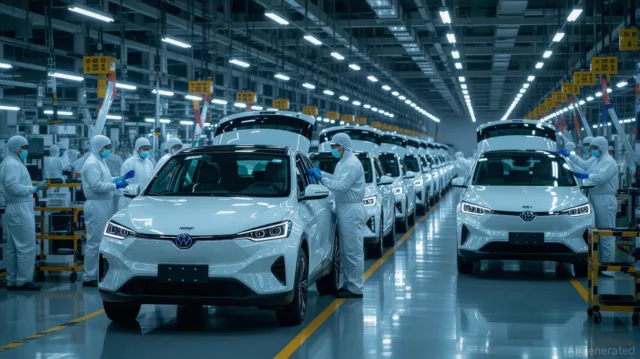
Folks, let’s cut to the chase: BYD’s July 2025 delivery slowdown isn’t just a blip—it’s a red flag for the entire Chinese EV sector. The company reported a 10.1% drop in global vehicle deliveries compared to June, the first decline in over 17 months. That’s not a typo. And when the market leader stumbles, the whole industry holds its breath.
The Numbers Don’t Lie
BYD’s July numbers tell a story of a company fighting a losing battle. Deliveries fell to 344,296 units, a 14% month-on-month plunge in EV sales and a 22.6% year-on-year drop in PHEV deliveries. To meet its 5.5 million-unit target for 2025, BYD now needs to average 602,000 units per month for the rest of the year—17% higher than its December 2024 record. That’s not just ambitious; it’s unrealistic.
But here’s the kicker: BYD isn’t alone. The broader Chinese EV market is teetering on the edge of a cliff. The China Passenger Car Association reported a 7.6% year-on-year increase in retail sales in July, but a 11% drop from June—classic seasonal softness. Yet, with BYD’s domestic sales falling 8% in June, the sector’s sustainability is under fire.
Regulatory Crackdowns and Price Wars: The New Normal
The Chinese government isn’t standing idly by. In July, Premier Li Qiang’s cabinet meeting emphasized curbing “irrational competition” through price monitoring and cost investigations. This isn’t just bureaucratic jargon—it’s a direct attack on the price war that’s been devouring margins across the sector.
The price war? It’s been brutal. Automakers are selling cars at a loss, with some even shipping “new” vehicles as “used” to meet sales targets. The government’s intervention aims to stabilize the market, but it’s a double-edged sword. While it might help companies like BYD regain pricing power, it could also stifle the innovation that made Chinese EVs so competitive in the first place.
The Survivors: Who’s Thriving in the Chaos?
While BYD stumbles, its rivals are seizing the moment. Geely sold 130,124 units in July, a 6.3% increase from June and a 120.4% surge year-on-year. Xpeng delivered 36,717 units, up 6.1% month-on-month, and Xiaomi quietly hit 30,000 units—a 20% jump from June. These numbers aren’t just impressive; they’re a wake-up call for BYD.
Why the disparity? Geely and Xiaomi have mastered the art of balancing aggressive pricing with brand differentiation. Xpeng, meanwhile, is doubling down on tech—its recent partnerships with Volkswagen and its 229.4% year-on-year growth prove that innovation can outpace price cuts.
The Global Implications: China’s EVs vs. the World
The regulatory crackdown isn’t just a domestic issue. Chinese EVs are now competing on a global stage, and the U.S. and EU are slapping tariffs on Chinese imports. BYD’s European expansion—where it captured 10% of the EV market in June—is a bright spot, but tariffs and geopolitical tensions could derail its global ambitions.
The Bottom Line: Is This a Buying Opportunity or a Warning?
BYD’s July slowdown isn’t a death knell, but it’s a warning. The company’s $10,600 Yuan Up Pilot EV and its upcoming Yangwang luxury brand in Europe could spark a rebound. However, the regulatory environment and price war fatigue make this a high-risk, high-reward play.
For investors, the key is to diversify. While BYD is a bellwether, companies like Geely and Xpeng—with their stronger balance sheets and innovative strategies—are better positioned to weather the storm. Meanwhile, NIO and Li Auto are on thin ice; their financial struggles could force consolidation or exit.
Final Takeaway
The Chinese EV sector is at a crossroads. Regulatory intervention and price wars are reshaping the landscape, and only the most adaptable players will survive. If you’re bullish on EVs, avoid chasing BYD on a rebound without a plan. Instead, look for companies with strong R&D pipelines, global expansion strategies, and financial discipline.
In the end, folks, the EV race isn’t just about speed—it’s about sustainability. And right now, the leaders are the ones who’ve learned to innovate, not just discount.








